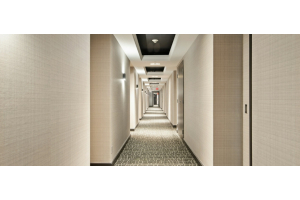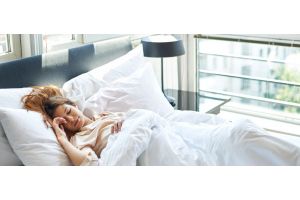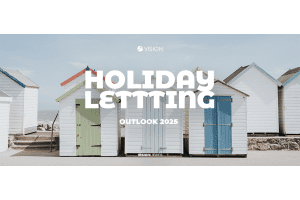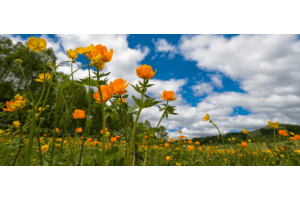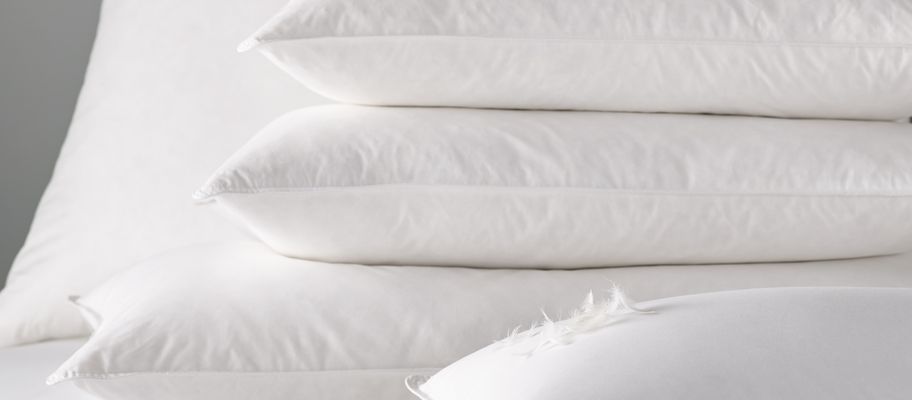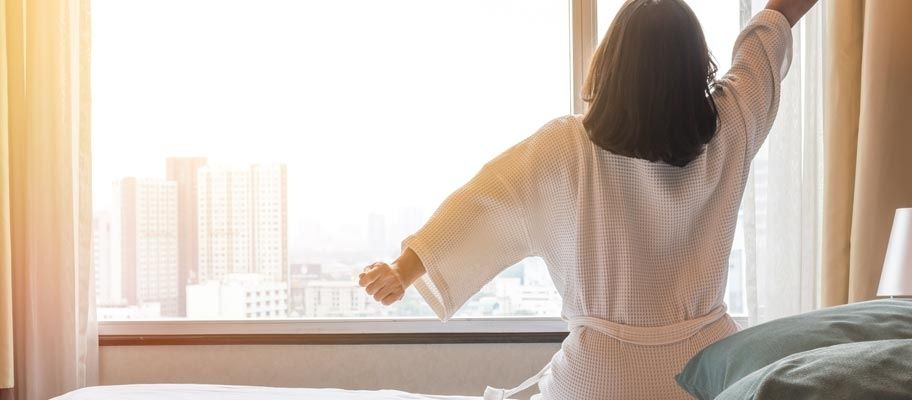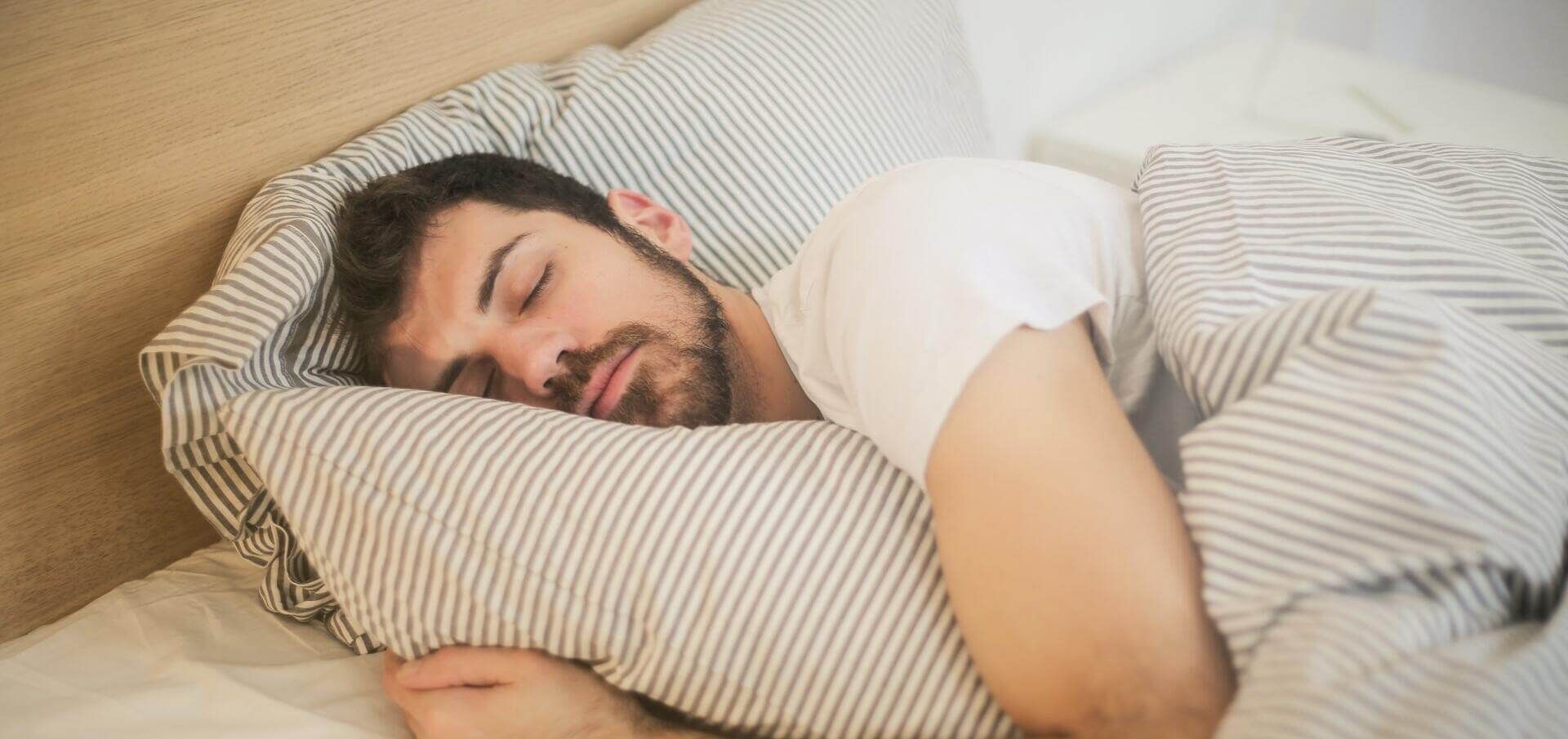We use cookies to give you the best possible experience. To accept cookies continue browsing, or view our Cookies Policy to find out more.
The Science of Sleep – What Is It and Why Do We Need It?
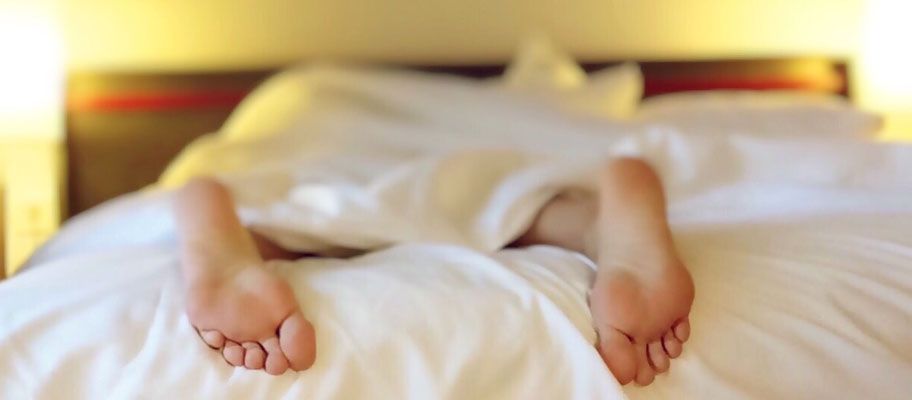
We spend about one third of our entire lives doing it. Children do it more. Old people do it less. Teenagers want to do it all the time! What is it? It’s something that people the world over are getting less and less of: Sleep!
Want to listen to this as an audio presentation instead? Press play on the button below or click here to listen on SoundCloud.
What is Sleep? Why do we need it?
Until the 1950’s people thought sleep was just a passive, dormant part of our lives. However, we now know that our brains are hugely active during the time we are asleep. Sleep, along with nutrition and exercise, is one of the most important things we can do to ensure we have a healthy life.
Most people recognise sleep as a period in our lives when we lay down and go into a state of unconsciousness; we suspend our normal activities and then wake up hours later to begin our daily routine all over again. Actually, sleeping helps our bodies to recuperate and go through a period of restoration required for us to function normally the next day.
Margaret Thatcher was famously said to survive on only four hours of sleep a night. But what happens to the human body if we don’t sleep for long enough?
After just one night without sleep, and you’ll know this if you’ve ever pulled an all-nighter, it becomes immensely difficult to concentrate, you’ll feel grumpy, groggy, irritable and forgetful. With a continued lack of sleep, the part of the brain that controls language, memory, planning and even sense of time practically shuts down as it’s that severely affected.
One famous experiment in 1959 saw a DJ, Peter Tripp, stay awake for eight days. After 100 hours he was unable to perform simple maths problems and couldn’t recall the alphabet. After 120 hours, he started to hallucinate.
In a study by Washington State and Pennsylvania Universities, they studied 48 healthy men and women; all of whom slept for around seven to eight hours a night. They divided them into four groups:
- The first group had to stay awake for three days without sleeping
- The second group slept continuously for four hours a night
- The third for six
- The fourth for eight
After 14-days, the fourth group who slept for longest showed no cognitive decrease but the others did. In fact, the second group who slept for four hours a night performed the worst of them all. Frighteningly, the participants didn’t even realise they were declining. They believed their mental state got worse for a few days but then tapered off when in reality they were getting worse and worse each day.
Non-REM and REM Sleep
Non-REM Sleep
The first stage of our sleep is non-REM and it goes like this:
Stage 1 - Light Sleep
During this stage, we’re half asleep yet half awake. You’ll find that in this period of sleep you can be awoken easily. Your muscle activity slows down and you may twitch involuntarily.
Stage 2 - True Sleep
Within around ten minutes of light sleep, you enter stage two. This usually lasts a further 20 minutes where breathing and heart rate start to slow right down.
Stages 3 and 4 - Deep Sleep
This is when the brain starts to produce delta waves. These are associated with the deepest levels of sleep, relaxation, and peace of mind. Delta waves allow the person to wake up feeling refreshed; they allow the body to heal itself, improve the immune system, regulate body functions and actually, can help a person to be more empathetic and intuitive. Stage 3 is when our breathing and heart rate are at their lowest levels.
Delta sleep is when sleepwalking and sleep talking are most likely to occur. It’s also the most common time where children may experience bedwetting and night terrors. Stages three and four are the stages of sleep where it’s very difficult to wake someone; with very little muscle activity and no eye movements present.
REM Sleep
The rapid-eye movement (REM) period of sleep usually begins around 90 minutes after someone first falls asleep and reoccurs after every 90 minutes. We generally have around three to five cycles of REM sleep a night. Named REM sleep because our closed eyes move rapidly side-to-side during this time, breathing becomes shallow, heart rate increases, blood pressure rises and your muscles are temporarily paralysed. Interestingly enough, when a person is in REM sleep the brain waves look a lot like those recorded when someone is fully awake.
There’s no universal definition for how long you have to be without sleep to be ‘sleep deprived’ however research has suggested that, over time, people show physical and psychological damage from not having enough sleep.
Firstly, in low levels of sleep deprivation a person’s cognitive and emotional function will be impaired. For example, a person who is sleep deprived may not recognise the emotions of others as easily, mistaking a positive look for a neutral one and a neutral look for a negative one. Additionally, a person may experience 'microsleeps’ where, although their eyes are open, their brain goes into a sleep state rapidly and uncontrollably for around 30 seconds at a time. This means they are effectively blind and can be extremely dangerous whilst driving.
Lack of sleep can seriously affect health in the long term too. It can make a person more susceptible to obesity, high blood pressure, diabetes and heart disease. In fact, sleep seems to be the most important indicator of how long you’ll live.
Sleep Debt
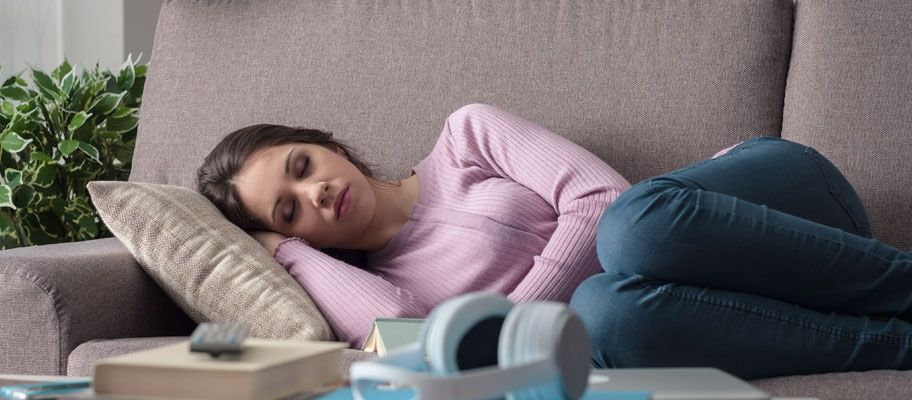
When a person is suffering from lack of sleep, or ‘sleep debt’ as it’s known, their short-term memory is affected and what they have learned during the day, may not have ‘filed’ during the night.
We also lose our capacity to create, plan and carry out activities. Those suffering from sleep debt have found to have decreased levels of humour, social skills and ability to concentrate. We’ve all encountered at least one instance where we’ve felt irritable, depressed and anxious whilst tired and this can also indicate you’re in sleep debt.
But what about the physical effects of sleep debt? Well, we find it harder to metabolise free radicals. Free radicals are molecules that are said to affect the aging cells and can even cause cancer. We’re more susceptible to colds and flu as our immune functions are affected. People suffering from sleep deprivation may notice an increased sensitivity to pain and, even, a lower threshold for seizures.
Long-term, a lack of sleep can adversely impact our metabolism as our brain interprets a lack of sleep as a lack of food, can put us at greater risk of diabetes, weight gain, heart disease, and strokes so it really is essential that we promote sleep within the hospitality industry.
Impact on sleep and athletic performance were tested on Stanford basketball players. Given a goal to sleep for 10 hours a day, their athletic performance was then monitored. By the end of the extra sleep period, players had significantly improved in shooting and each one was quicker than before the study had started.
Experts say 95% of people need seven to nine hours of sleep a day to function optimally – or rather people who sleep for less than 7 hours will experience decreased mental and physical performance.
In the 1960’s, at the height of the ‘Space Race’, Michael Siffre decided to spend time in isolation, in caves. In the first experiment, he spent 63 days in the cave and although his mind had lost track of time, his body had not as he had maintained a regular sleep schedule amounting to around a 24.5 hour day.
He had kept regular cycles of sleeping and waking unintentionally which proves humans have internal clocks.
We mentioned Margaret Thatcher earlier, so how long do other people in our history sleep for?
- Margaret Thatcher was said to get 4 hours of sleep a night.
- Donald Trump has said he sleeps 3-4 hours a night according to his book.
- Leonardo Da Vinci apparently used the Uberman Sleep Cycle and had a 20-minute nap every four hours meaning he only slept for 2 hours on average a night.
- Mariah Carey claims she needs 15 hours of sleep a night.
- Albert Einstein was said to sleep for 10 hours a night.
So, what do you need for a really great night’s sleep?
Mattresses
The more economical mattresses use an open sprung technology. Each spring is connected to another using a wire frame, creating a springy expanse and providing a good overall level of comfort.
A potential downside is that you do get a ‘roll together’ effect and hence is best suited to single beds, if used at all in the hospitality industry.
Then there’s posture sprung (individual pockets) or memory foam. However, some manufacturers successfully marry the two technologies for a superior sleep experience.
Clare Taylor, Marketing Manager for our partners, Hypnos, said: "Choosing the right mattress is key. A pocket sprung mattress upholstered with soft comfort layers is ideal as this helps to provide first class comfort with a high level of body support.
"This pocket sprung mattress works to actively minimise pressure points on the body, helping to increase blood circulation and alleviate tension, allowing muscles to recover - perfect for guests staying in a hotel or serviced apartment.
"It's also important to select one that has hygienic qualities, such as protection against bed bugs or liquid ingress, as this will offer those working in the hospitality industry with a bed that's easy to maintain."
Bed Linen
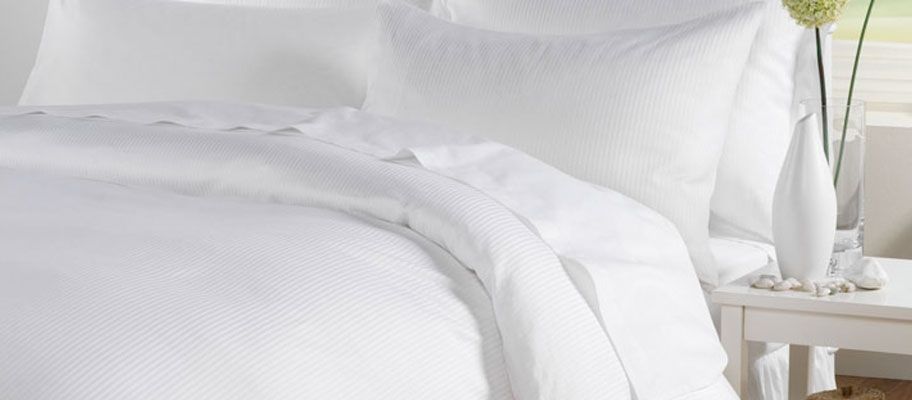
Duvet covers, sheets, and pillowcases don’t just keep filled products clean; they are an important and powerful aesthetic to a luxury bedroom. So what fabrics help provide the best night’s sleep?
Because polyester is inherently non-absorbent, it is bed avoided as a bedding fabric. Polyester generally starts life as ‘plasticky’ beads. They are melted and the individual fibres are extruded, therefore, each fibre is akin to a fishing line.
These fibres are combed, so that smaller ‘wisps’ are pulled from the core fibre, and then often combed again with smaller gauge combs. This will then make polyester feel fluffy and the micro-combed fibres will hold moisture however it does not make the material absorbent. We’ve all worn a waterproof jacket only to find that we’re still soaked because of body moisture that couldn’t be wicked away – polyester bed linen will, therefore, feel similar.
Cotton is often the product of choice for bed linen, with higher thread counts giving an extra edge when pampering your guests. Cotton can hold many times its own weight in moisture; hence the wicking effect helps keep the guest cool rather than clammy. A higher thread count is even more effective, as there is simply more moisture-absorbing cotton available.
Our higher thread count bed linen comes with an ‘Italian finish’ as standard (but without a European price tag…) and even our lower thread counts feature a ‘sateen’ finish, which use a flame to burn off loose projecting fibres as the fabric is run under the flame at very high speed. The resulting sheen left on the surface of the cotton is delightful.
We should also make mention of pure linen. Produced from the flax plant, this luxurious fabric is some 40 times more absorbent than cotton. Although Vision supplied pure linen bed sheets for the Burj al Arab, as it is just so hard to process (ironing etc), for most hotels, it is not commercially viable.
Natural Fillings
Natural fillings such as goose and duck downs are synonymous with quality and luxury. Due to their breathable properties, they’re fantastic at trapping air and so provide a supremely comfortable sleeping experience. More expensive than synthetic duvets, natural filled products will last longer and provide a great return on investment.
Down feathers are generally found on the breast of the bird, protecting the vital organs. Under a microscope, you’ll find that down feathers are full of tiny pockets that trap air hence the insulating properties are excellent and because of this, not much filling is required to achieve a high tog rating, so the duvet is light. The drape that a down duvet provides means less cold pockets under the duvet, and a fantastic night’s sleep! This drape effect is also a quality which makes down an ideal filling for pillows.
As feather is not as good an insulator as down, more product is required, making for a heavier duvet, but which some people like. However, the most common combination is a feather and down mix, which meets the needs of both luxury and economy.
Just a word of caution when using natural fillings; animal rights pressure groups such as 4 Paws and PETA have been putting increasing pressure on retailers to prove that their feather products have been ethically & conscientiously sourced so it’s important to shop around and check the accreditations and corporate social responsibility of any manufacturer or retailer when purchasing down or feather product. Take a look at Vision's social & environmental obligations for more information.
Synthetic Fillings
Synthetic fillings may not be regarded as prestigious as natural fillings but a great quality one can last and provide a gloriously luxurious feel. With the introduction of ‘Sheer Lux’ which uses a combination of 15 & 2 denier fibres, synthetic fillings are now considered almost as effective for trapping warmth. And they are inherently hypo-allergenic too.
Finishing Touches
Other things that can help are the use of fragrances such as lavender oil, perhaps putting a few drops of oil under the duvet as part of the turndown service. But other scents such as rose, ylang-ylang, ginger and even orange can all ease your guest into a clam and tranquil state.

A Good, Relaxing Cup
Whilst many people consider taking a ‘nightcap’ to help them sleep, it’s much more beneficial to avoid alcohol altogether. Instead, a good cup of decaffeinated tea is all that you need to help put you to bed.
Whilst chamomile is highly regarded as the go-to drink for helping you slumber, there’s little scientific evidence that it acts as a sedative – though it is useful for its antioxidant properties.
Valerian a type of herb and has some scientific backing behind it proven to be successful in treating certain sleep disorders. The Committee on Herbal Medicinal Products found it can be used for the relief of mild nervous tension and sleep disorders.
For those feeling that little bit more adventurous, try brewing a cup of lettuce. Yes really! As lettuce contains lactucarium; known for its sedative and analgesic properties, it’s ideal for brewing in a tea to help insomnia. Using two leaves of romaine lettuce, brew for 20 minutes in 220ml of water and then strain.
Also, any in-room snacks should not be laden with sugar, which will act as a stimulant. For example, wholegrain cereals boost serotonin, which is a mood stabiliser and helps induce healthy sleep patterns.
Cherries are a natural way to boost melatonin, which is the chemical which makes us feel tired. If you can’t provide a bowl of fresh cherries, a carton of cherry juice may suffice. Bananas and almonds also have known properties that can help your guests get a good night’s sleep.
Cool, Dark & Quiet Rooms
How easy is your air conditioning to control? A slightly cooler environment is ideal for bedtime. And make sure that there are no draughts!
Rooms should have the ability to be blacked out if needed. And if this wasn’t available, making sleep masks available can help.
If the position of some of your rooms means that noise ingress will be unavoidable, making earplugs available would be a thoughtful gesture.
The thought of putting together a room designed with sleep in mind may seem daunting and time-consuming but selecting a few easy to employ tactics will ensure your guests know you have considered their needs and requirements and may ultimately turn into what you really want – a repeat visit.
For more tips, read our post on how hotels and B&B's can improve sleep for their guests.
Related reading:


